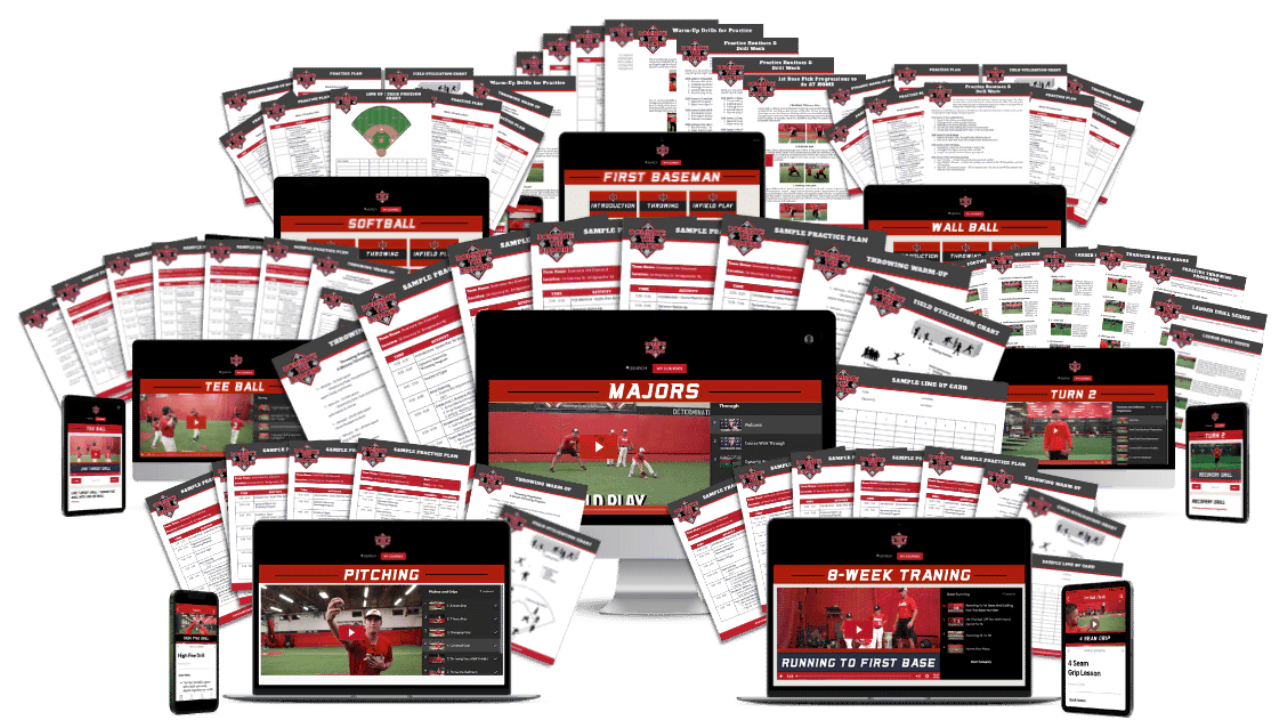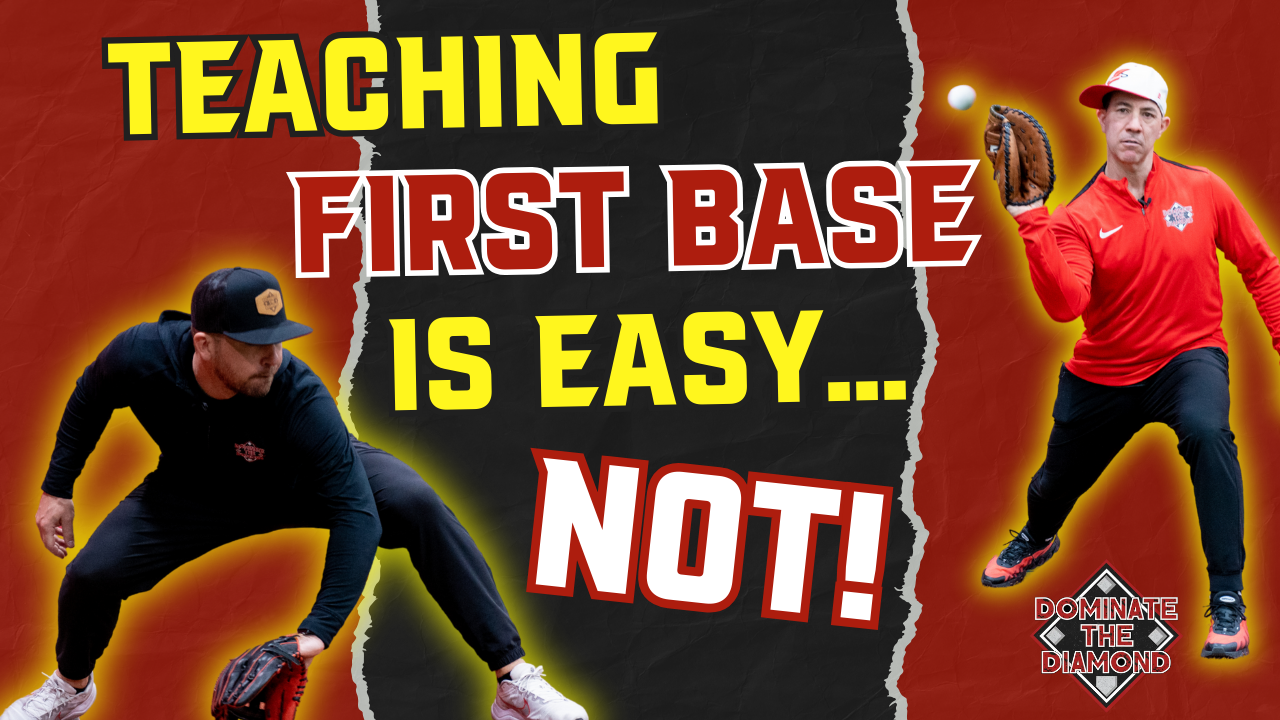Top 10 Mistakes Every Youth Baseball Coach Should Avoid

Imagine stepping onto the field for the first practice of the season. The sun is shining, the smell of freshly cut grass fills the air, and a mix of excitement and nerves buzzes through the young players lined up before you.
As a youth baseball coach, you’re not just teaching a game; you’re shaping young athletes’ experiences, memories and lives. Before you jump into the skills and strategies, you need to reflect on the common pitfalls that can derail even the best intentions. From confusing drills to ignoring team dynamics, many missteps can turn your coaching from smooth to frustrating.
Let’s look at the top 10 mistakes that many coaches make and the practical tips you can use to avoid them.
Mistake #1: Ignoring Player Development
Sometimes coaches are so focused on winning that the development of fundamental skills takes a backseat. While you might dominate more games, individual players aren’t improving their core abilities which leaves them unprepared for more difficult challenges later on.
Solution: Shift your mindset from winning at all costs to nurturing player growth. Design practice plans that prioritize skill development and progress. Remember to celebrate small victories and improvements. For instance, if a player successfully performs a new technique, acknowledge it. Encouraging a growth mindset keeps players motivated. You can also consider creating a player development plan which tracks progress over the year. This will help you to assess and adjust your approach based on each player’s needs and advancements.
Mistake #2: Overcomplicating Drills
Have you ever introduced a drill with a lot of steps only to notice your players - especially younger ones - looking confused? Making things too complicated can lead to frustration and cause players to give up.
Solution: Keep drills age-appropriate and straightforward. Start with the basics and gradually introduce more complicated instructions as players become comfortable. Instead of a multi-step hitting drill, start with a simple tee drill and build from there. Clear instructions and demonstrations can make a huge difference in player understanding and enthusiasm. Using visual aids or video examples to illustrate drills can also be effective. Sometimes seeing drills in action helps players grasp the concepts more quickly. Our Rookies Online Coaching Course is a great place to start for video lessons and drills for coaches who are working with players age 8 and younger.
Mistake #3: Not Being Prepared
Think back to a practice where everything seems to be going wrong. Equipment is missing, session plans are disorganized, and players aren’t sure what they’re supposed to be doing. This kind of chaos can lead to wasted time and frustration.
Solution: Thoroughly plan your practices in advance. Create a structured agenda with specific goals and gather all necessary equipment beforehand. Start preparing drills and setting up practice stations before players arrive so that practices run smoothly and effectively. Practice checklists are good to use so that you don’t forget the essentials. This can include equipment, drill instructions, and any special notes for the day. Our ready-made practice plans can help you deliver organized and engaging practices and ensure you’ve covered all skill areas each practice.
Mistake #4: Forgetting About Team Spirit
No one wants to be part of a team where the atmosphere is tense and the players don’t get along. Without a positive team environment, performance and morale can suffer. Building strong team dynamics is the most important part of a successful season.
Solution: Incorporate team-building activities into your program to foster a culture of respect and encouragement. Team bonding exercises or simple icebreakers can help players connect. Celebrate team achievements, not just individual successes, to build camaraderie. By regularly checking in with your players you can find out how they’re feeling about their teammates. Address any issues immediately to make sure problems don’t have time to grow. Check out the Winning Mindset Online Coaching Course for lessons on respect, and how to teach kids to “Flush it”.
Mistake #5: Overusing Star Players
It’s tempting to rely heavily on your standout players in pivotal moments. While they’re valuable assets, using them too much can get in the way of the development of other players. This can cause an imbalance within the team and cause frustration among other players, who may feel overlooked and less motivated to improve.
Solution: Rotate positions and playing time to ensure all players get an opportunity to contribute. This approach not only helps player growth but also creates a more balanced team. For instance, if you have a star pitcher, allow other players to pitch in games or practice sessions too. Set specific goals for each player and track their progress. Making sure everyone has a clear path towards progress makes them feel more valued.
Mistake #6: Poor Communication
If your players seem confused and unsure of what is expected of them, it might be because of the way you’re talking to them. Effective communication ensures players understand what’s expected and how to achieve it.
Solution: Use simple, understandable language and check in with players to make sure they grasp the instructions. Provide clear feedback and create an environment where players feel safe to ask questions. For example, after explaining a drill, get players to repeat back the instructions to get a sense of their understanding. Try using visual demonstrations or walkthroughs to add to your verbal instructions. Sometimes, seeing really is believing!
Mistake #7: Not Considering Individual Needs
Not all players are created equal. Remembering that each child has their own special needs means no one gets left behind. Leaving some players to struggle while others excel weakens team morale. Tailoring your coaching to meet your whole team’s goals is essential.
Solution: Recognize and accommodate for the individual skills and learning styles of all your players. Adjust your coaching methods to support their development. If a player learns better through visual demonstrations, incorporate more of those into your practices. Check in with players to understand their preferences and challenges. This personalized approach supports every player in feeling supported and valued
Mistake #8: Avoiding Mixed Signals With Discipline
With kids, inconsistency in rules can lead to confusion and even disrespect. When expectations aren’t clear or applied fairly, it can create problems within the team.
Solution: Set clear rules from the beginning and make sure to apply them consistently. Confirm that all your players understand what you expect from them and the consequences of their actions. For example, if there’s a rule about being on time, make sure you enforce that standard with everyone..
It’s a good idea to document the rules in a team handbook or visual chart. This can serve as a constant reminder for players to help maintain consistency.
Mistake: #9: Forgetting About Fun
When you’re caught up in drills and competition it can be easy to forget to keep things fun. Young players can lose their enthusiasm and passion for the game if it’s always serious and high-pressure.
Solution: Balance skill-building with fun activities that keep your players excited about baseball. Why not mix things up with a practice game or a skill challenge? It adds a fun twist while still focusing on growth. Don’t be afraid to ask the kids for feedback on what they like most about practices. Use their preferences to guide your planning and keep practices fun.
Mistake # 10: Not Adapting to Player Feedback
Coaching isn't always a one-way street. Ignoring valuable feedback from your players can lead to frustration and missed chances to improve. Players often have important perspectives that can strengthen the team's success and enthusiasm.
Solution: Regularly get feedback by creating a safe and open space where players feel comfortable sharing their thoughts, feelings and suggestions. Consider having routine team meetings or anonymous surveys to gather input on drills, practice routines, and game strategies. By valuing and acting on player feedback, you can make adjustments to best meet their needs, keeping them engaged and motivated.
Avoiding these common missteps and implementing these tips will set you up for a coaching experience that’s both successful and fulfilling. Coaching isn’t just about teaching techniques and strategies—it’s about fostering a love for the game and inspiring young athletes.
Balancing the fundamentals with fun, and creating an environment where players are excited to learn and grow is at the center of great coaching. When you focus on making practices enjoyable and engaging, you’re not just helping your team win games—you’re developing their lifelong passion for baseball.
So, as you step onto that field, keep these tips in mind and remember that your role is as much about mentorship as it is about strategy. Here’s to making every practice a blast and every game a chance to shine.
Looking to bring fresh energy to your coaching? Check out our premade practice plan templates and get more tips on making all your coaching sessions both fun and impactful—click here to get started!








